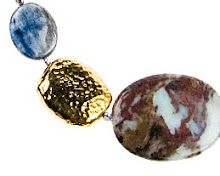The accessory industry is an ever changing landscape of competition. See where you fit in, and how to compete with the rest.
Large Scale Jewelry Manufacturers
This classification refers to companies that have more than 50 permanent staff, and produce millions of pieces of jewelry each year for sale to distributors or customers who sell large volumes. Companies of this magnitude have learned how to make the most out of globalization, and most of the factories producing their jewelry are located in South East Asian countries where labour costs are extremely low. This strategy results in a very low per-unit cost. The lower cost of labour more than makes up for the increased cost of shipping. You never want to compete head on with these suppliers since they will always be able to make things for less. There are some drawbacks to dealing with large scale jewelry manufacturers that the other players can exploit to compete effectively. Big companies cannot change their operations very fast. They are usually setup to do one thing well and repeat it over and over again, so as the styles change from stringing to wire wrapping to casting to gluing, they have all of their staff to retrain and the factory to retool.
Jewelry items produced by these factories are shipped via sea freight which is less expensive, but takes four to six weeks for delivery. They also may have long lead times for orders. From a jewelry order to delivery it may be 3 or 4 months. Once the jewelry order is made it is too late for adjustments. It can also be difficult to communicate precise jewelry design specifications, which are sometimes misinterpreted: one person's 'pink' might be different from another's; one person's 'acceptable' may be another's 'defective' , etc.
Small to Mid-Size Manufacturers
This calibre of organization has 3 to 20 permanent staff and sells jewelry to a broad area like an entire country or continent with the help of sales representatives. They can not usually depend on cheap labour to save on costs. Although jewelry component quantities ordered are not as high as large manufacturers, mid-sized companies still enjoy some level of bulk jewelry component discounts. Jewelry accessory operations at this level have usually made some international supplier contacts and tend to buy components locally and abroad. At the very least, jewelry companies don't have quite the same burden of unwieldy international communications or expensive and time-consuming shipping.
Their main strength is the distinctive jewelry design that made their jewelry operation sustainable in the first place, jewelry production methods that are streamlined as much as possible, and friendly connections to material suppliers that don't involve too many 'middle men.'
Independent Artisan Studios
These are usually comprised of a single energetic and slightly business-savvy designer who is responsible for designing, manufacturing, and selling their own jewelry creations to boutiques and other individuals. Jewelry is their main source of income. Material costs per unit are quite high because small quantities of jewelry components are purchased, but shipping is usually negligible as objects are coming from nearby places. Relying on locally available gemstones, wire, beads, and chains, however, may impose confining restrictions on creativity. Labour costs appear low because the designer does most or all of the work, but it is time-consuming. From a business point of view, it's a pretty taxing cost-to-benefit ratio, and doesn't amount to the most enticing hourly wage. Thankfully it's a small price to pay for creative people who have begun to make a living from their jewelry artistry.
Hobbyists
These are enthusiastic, self-motivated individuals who make jewelry on the side of their day job or other fulltime responsibilities. They may sell their unique jewelry creations to friends, family, and so on, but not in a way that significantly adds into their personal income. It is usually because of encouragement and positive feedback that they decide to pursue accessories as a career. Most established jewelry designers started out in this way.
Material costs per unit are very high because small quantities are typically purchased from bead or craft stores that add their own markups to jewelry components. These stores target casual crafters who are not selling much jewelry, and are therefore a bad place to shop for anyone producing significant quantities or hoping to turn a profit from sales. Labour costs normally don't exist in a monetary sense, but only because one person is doing all the work, on their own time. For these people, making jewelry is not considered labour or work.
Copycats
Some entrepreneurs make a living through copying existing jewelry designs and reproducing them at a reduced cost. They then sell these jewelry copies at a price point that undercuts the original seller, with their own jewelry designs. Sometimes boutiques and department stores actually request cheap copies of jewelry so they can improve their profit margins. 'Copycat' jewelry operations are typically smaller and locally run, making them very flexible and dynamic, without a large overhead or inventory. Since they usually use locally available components bought in relatively small quantities- an expensive combination- they must find creative ways of reducing the cost of jewelry production. Labour is one point of savings, as these jewelry manufacturers will generally work on their own and in their own home, and cheap materials are another. Since gemstones, crystals, precious metals, and other components all have a sizeable range in quality and value, there is always money to be saved in cutting corners on materials.
Thursday, July 9, 2009
Canadian Accessory Industry
Labels:
accessory,
canadian,
copycats,
definition,
hobbyists,
industry,
introduction,
large scale,
wholesalers
Subscribe to:
Post Comments (Atom)

No comments:
Post a Comment